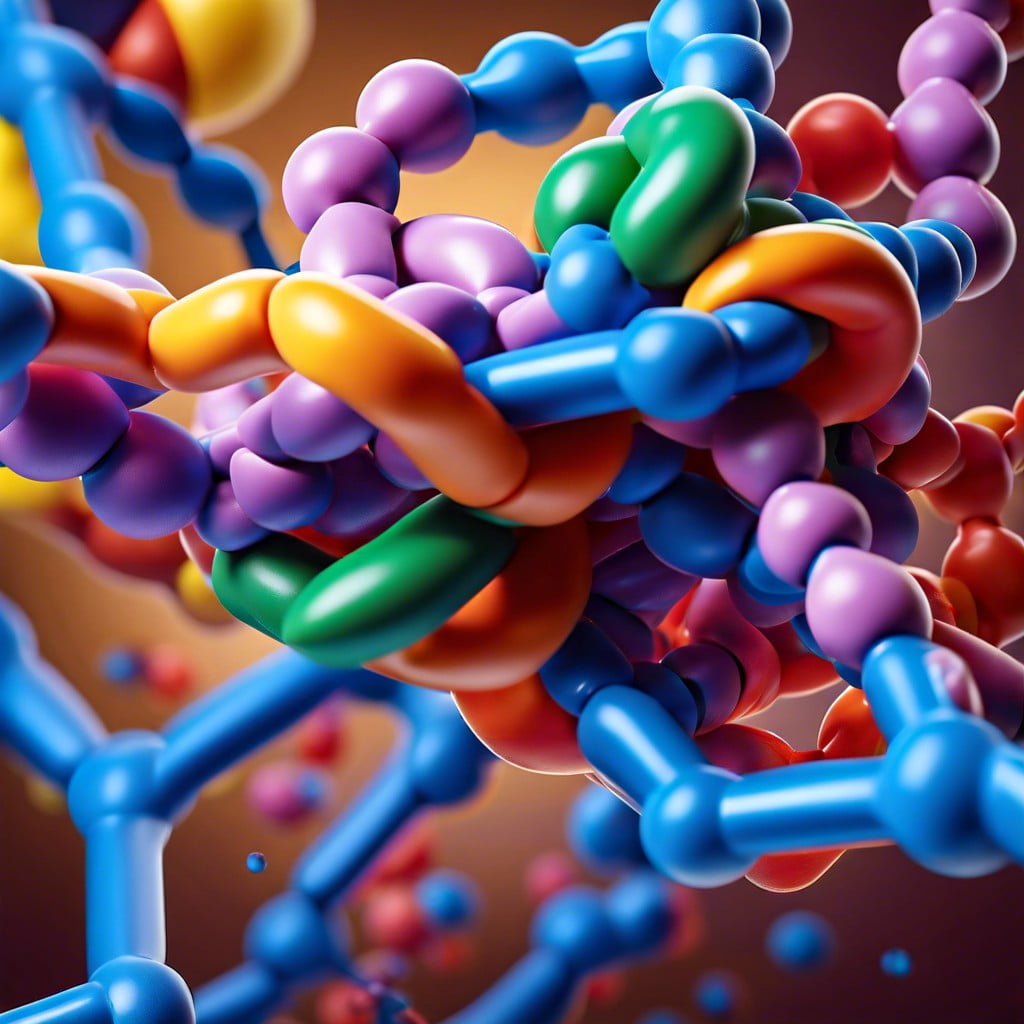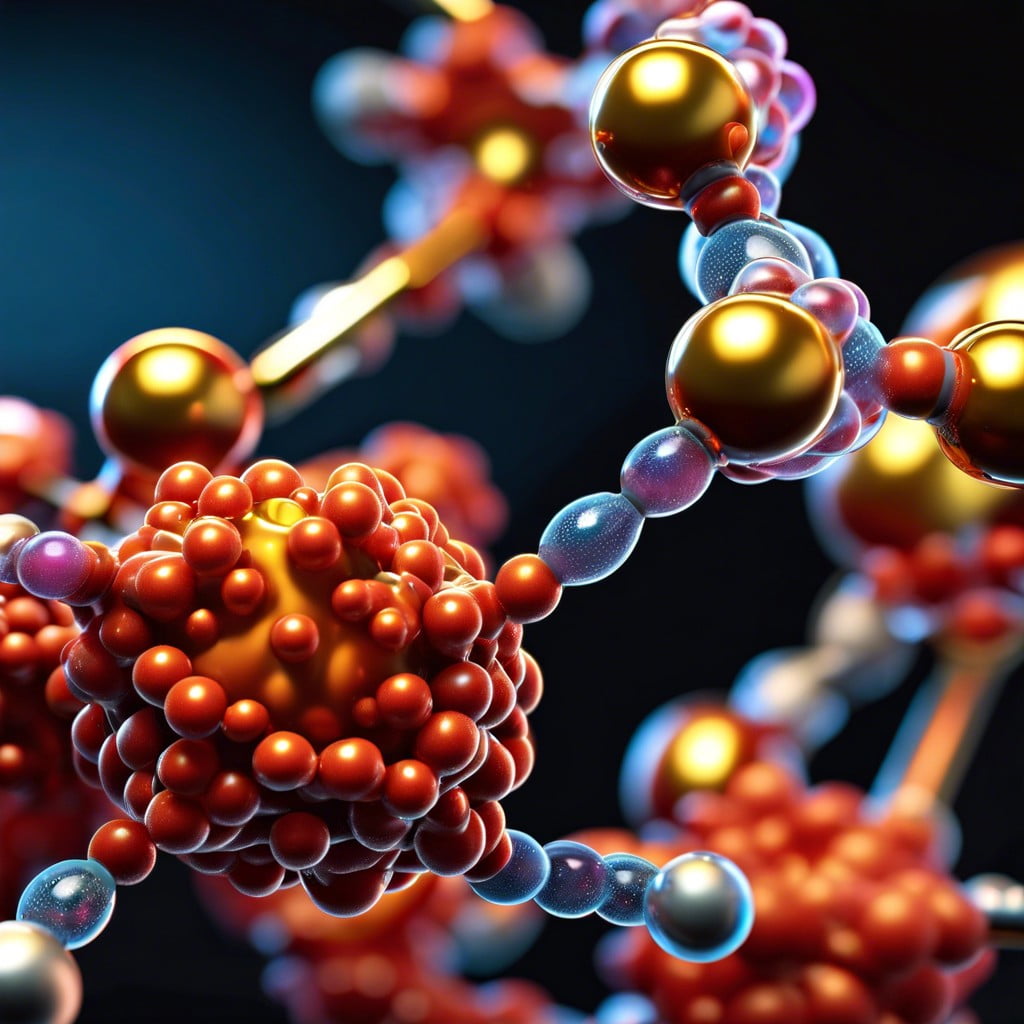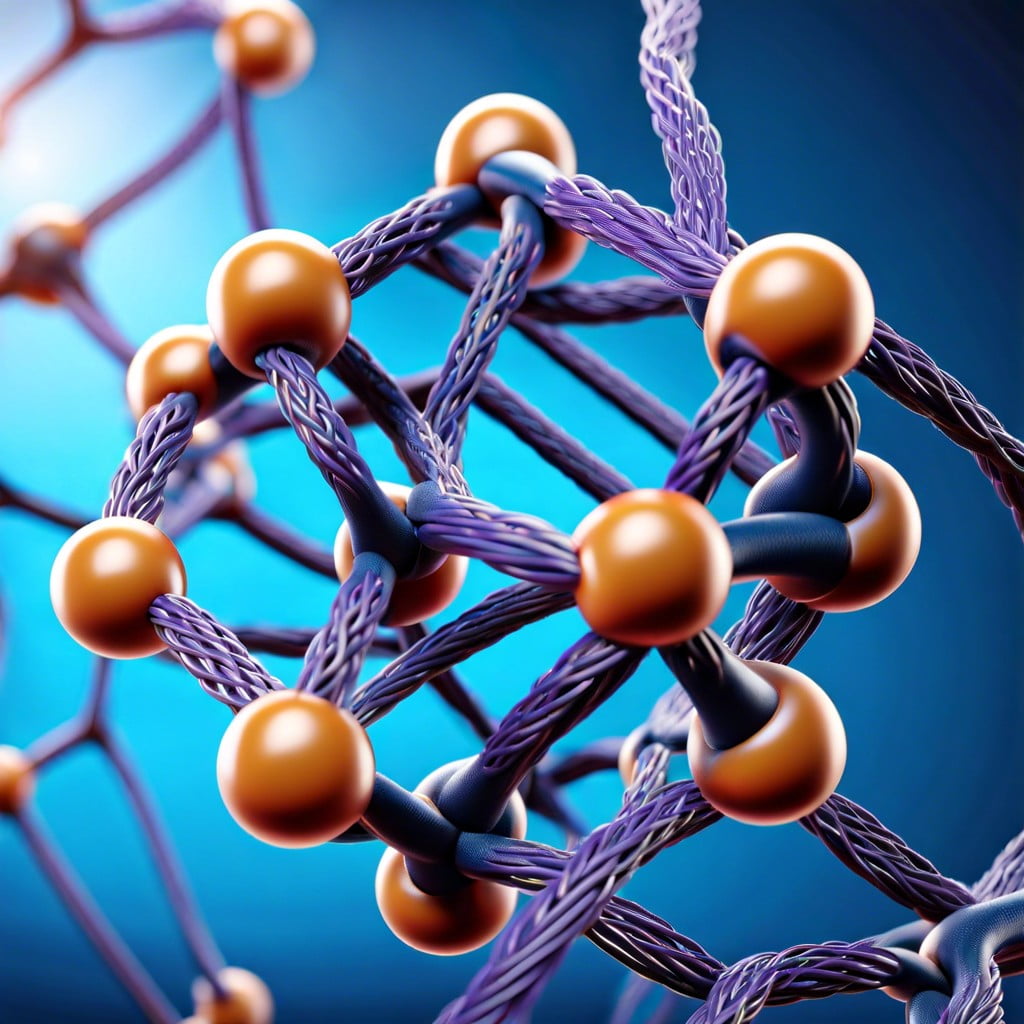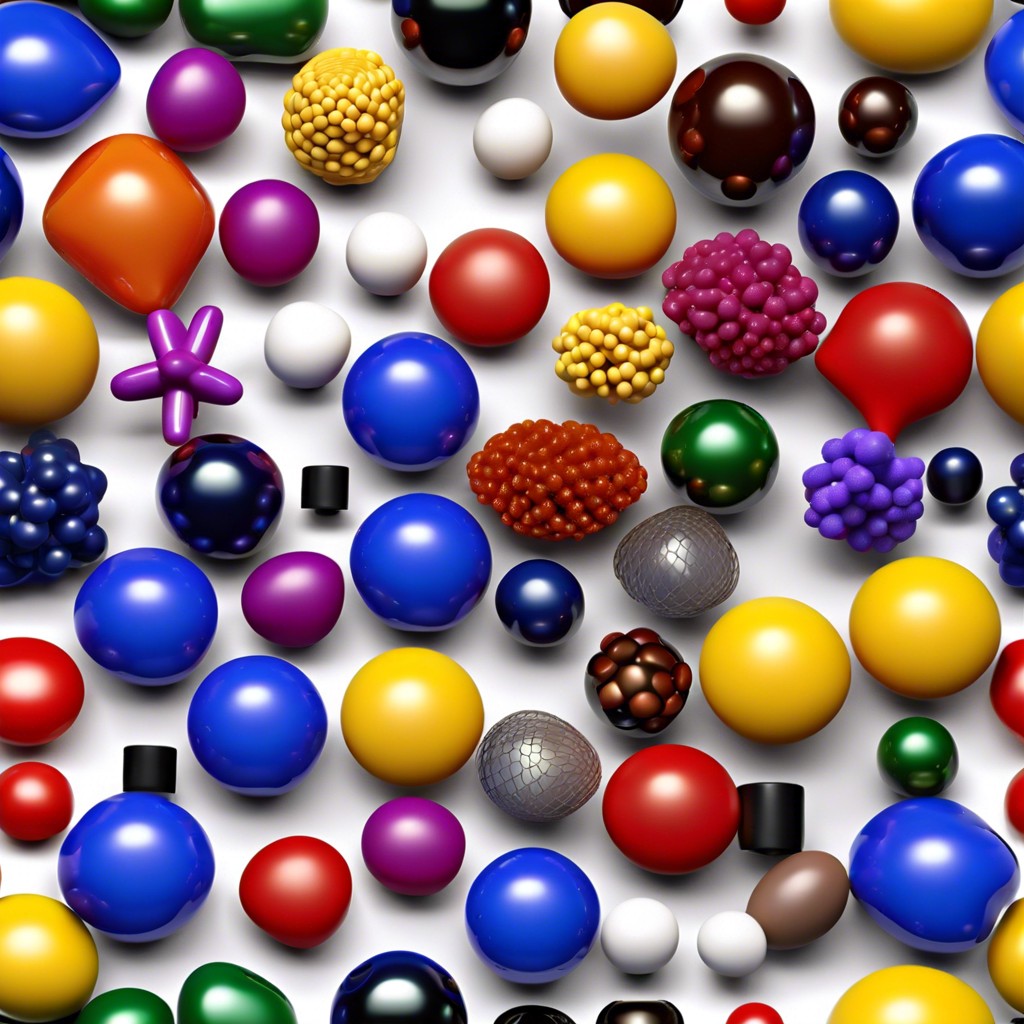Discover the intriguing world of polymer chemistry, where we will unravel the mysteries of how these versatile materials are concocted and why they’re everywhere around us—from sneaky non-stick pans to waterproof jackets.
Key takeaways:
- Polymers are made through addition, condensation, and ring-opening polymerization.
- Polymer structure affects properties like flexibility and strength.
- Polymers are used in construction, healthcare, electronics, packaging, and automotive industries.
- Polymers can degrade due to sunlight, oxygen, heat, chemicals, and water.
- Polymer chemistry dates back to the 19th century and has evolved over time.
What You Will Learn
Synthesis of Polymers
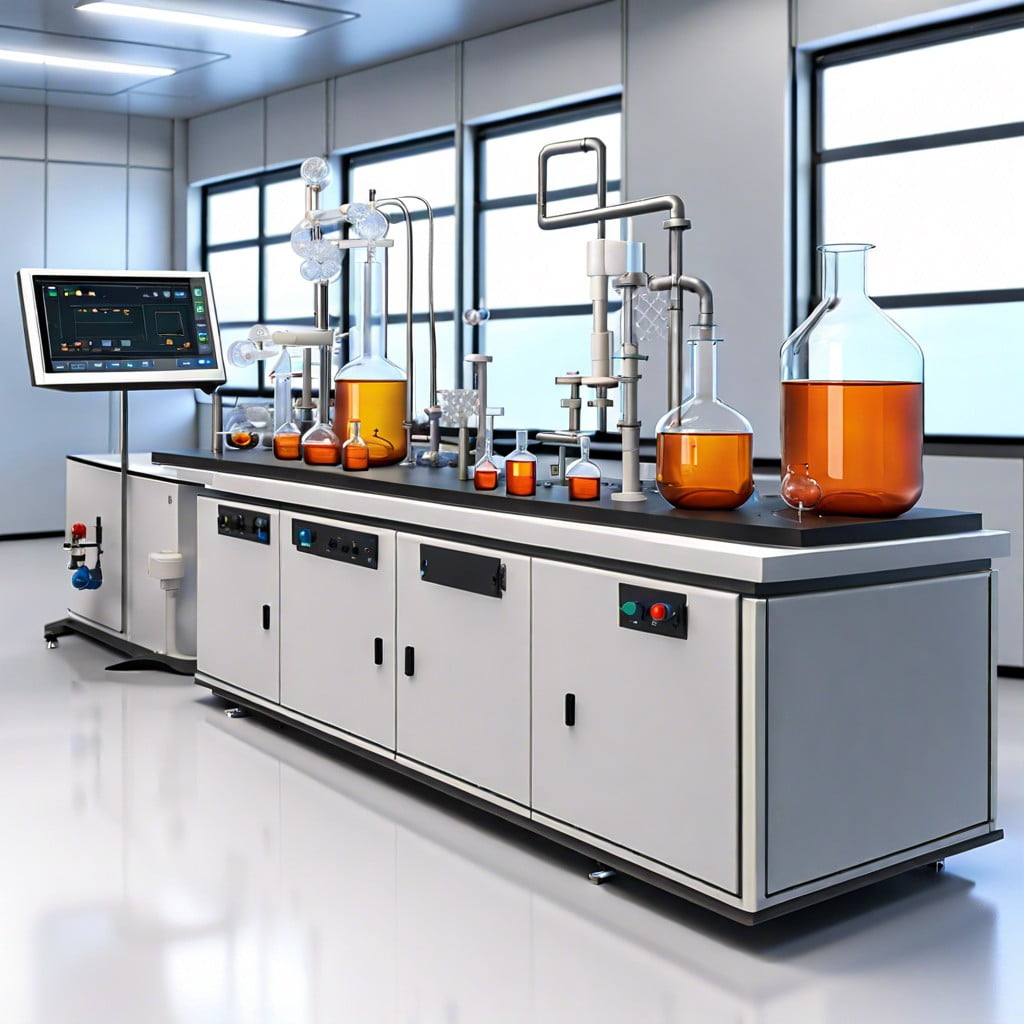
Polymers, those long chains of repeating molecular units, don’t just show up; they’re made through a series of fascinating chemical reactions. Picture molecular beads stringing together in a fantastical fashion at a microscopic level. Here’s how this magic happens:
Addition polymerization is like a party where one molecule starts a conga line, and others quickly join in one by one. No by-products are waved off; thus, it’s a clean and efficient method. This method is behind making things like the polyethylene in your plastic shopping bags.
Condensation polymerization, on the other hand, is like making a fruit salad where you keep getting leftover fruit peels. Every time two molecules join, a small molecule, usually water, is spit out. This method gives us materials like nylon that ends up in everything from stockings to toothbrush bristles.
Ring-opening polymerization kicks off when a molecular ring decides to open up and lay flat, allowing other rings to join in and form a long, connected chain. This method is used to make special polymers, like those used in biodegradable plastics.
By tweaking the conditions such as temperature, pressure, and catalysts, chemists can create polymers with tailored characteristics suited for specific uses. Trust me, it’s like having a knitting pattern that you can adjust to get the perfect sweater size every time!
Structure and Properties of Polymers
Polymers are akin to the Transformer toys but on a molecular level: they change and adapt based on how their atoms are structured and the bonds that hold them together. Here are some intriguing facts about how this works:
First off, the building blocks of polymers, known as monomers, can come together in different patterns. Whether they line up in a straight chain, branch out, or form a more complex 3D structure, each arrangement gives the polymer unique properties. This is why some polymers are as flexible as yoga instructors, while others are tough as old boots.
Another cool aspect is the interaction between polymer chains. They can be chummy, having weak attractions (Van der Waals forces if you want to sound fancy at parties), or more like standoffish neighbors (thanks to stronger covalent bonds). This social behavior affects everything from a polymer’s elasticity to its temperature resistance.
Then there’s the influence of crystallinity – the degree to which the molecular chains are organized in a tidy, orderly fashion. More crystallinity typically means more strength and less flexibility, a bit like having a well-drilled army rather than a loose group of rebels.
These fascinating aspects of polymer structure and properties lay the groundwork for understanding why materials behave the way they do and how we can best use them in everyday applications. From cushy running shoes to bullet-proof vests, it’s all about getting those polymer chains to work in our favor!
Applications of Polymers
Polymers are like the chameleons of the material world, adapting to countless uses due to their versatile properties. Let’s take a peek at where you might bump into them.
- Construction and Building Materials: Imagine a world where buildings and roads mend themselves. Polymers make this almost possible! They’re found in paints, sealants, and adhesives, providing steadfast durability and resistance against moisture and UV rays. They also reduce the cracks jokes about the construction industry.
- Healthcare: Ever considered thanking a polymer? Well, next time you see a lightweight, durable medical device or a controlled drug release system, say thanks! From surgical devices to implants like hip joints, polymers are behind many medical marvels.
- Electronics: Here’s where polymers really flex their muscles—wrapped around your gadgets. They provide insulation to electrical components and are pivotal in producing flexible displays. Even in harsh environments, they ensure your devices don’t have a meltdown.
- Packaging: Polymers are the unsung heroes in the world of packaging, keeping your food fresh and safe. They are crucial for creating everything from breathable film wraps to sturdy beverage containers. Plus, they’re masters at keeping chips crispy — and who doesn’t appreciate that?
- Automotive: Want a lighter vehicle with better fuel efficiency? Polymers are the go-to. They’re key in reducing vehicle weight and, consequently, emissions. Be it in tires, interiors, or exteriors, they help cars stay durable and dashingly good-looking.
In each of these fields, polymers are not just present; they are revolutionary, constantly pushing the boundaries of innovation and practicality.
Degradation and Product Failure of Polymers
As polymers age, they face the inevitable: degradation. This can lead to product failure, which is not exactly a party for anyone. Imagine your favorite pair of rubber boots cracking just as you step into a puddle; not fun, right? Here’s why these unfortunate events occur:
Sunlight is not always your friend, especially if you’re a polymer. UV radiation can break down chemical bonds in polymers, leading to brittleness and color changes. Just like how we get sunburn, polymers get “sun-damaged.”
Oxygen, the stuff of life, can actually be quite the troublemaker for polymers. Through a process called oxidative degradation, oxygen molecules sneak in, reacting with polymer chains and leading to deterioration. It’s kinda like rust but for plastics.
Heat is another big no-no. High temperatures can accelerate the breakdown of polymers. This process, known as thermal degradation, can make materials lose their strength and elasticity. It’s like turning a once tough cookie into a crumbly mess.
Chemicals are not always besties with polymers, either. Exposure to harsh chemicals can lead to chemical degradation, where the material’s structure is compromised. Think of it as a friendship gone sour, resulting in some serious structural gossip!
Water might seem harmless, but it can also participate in the degradation party. Hydrolytic degradation happens when water interacts with polymers, breaking them down over time. Sorry, but water isn’t always the good guy in the story.
Understanding these factors helps in predicting the lifespan of polymer-based products and in designing more durable materials. After all, no one likes a party that ends in tears (or broken products!).
History of Polymer Chemistry
Polymer chemistry is like the plot of a sci-fi movie that turned out to be real; it started way back in the 19th century when chemists first tinkered with synthetic polymers. Imagine gentlemen in top hats and tailcoats, pouring colorful liquids from one beaker to another, and voilà—Parkesine, the first man-made plastic, emerges in 1862.
In the roaring 1920s, while jazz music filled the air, synthetic rubber came bouncing along—talk about party essentials! Nylon stockings then shimmied their way into the scene in the 1930s, making it possible to have stretchy, durable hosiery without breaking the bank.
Fast forward to the 1950s—the real golden age of polymers! High-density polyethylene (HDPE) danced its way into the market, leading to the revolution in packaging. Tupperware parties began popping up, turning leftover storage into a suburban cultural icon.
Throughout this historic journey, polymer chemistry has rapidly evolved, diversifying into the myriad applications we see today. From your non-stick Teflon frying pans to the Kevlar keeping first responders safe, polymers are literally everywhere, and it all started with a few curious chemists a couple of centuries ago.
Related reading:

